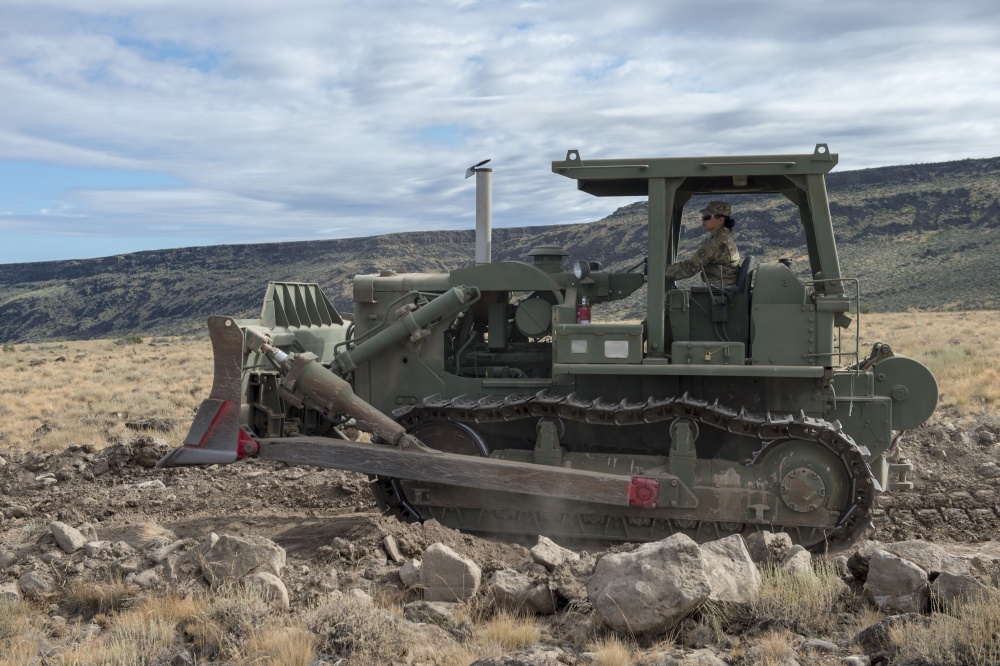Idaho National Guard builds a new road for the Shoshone-Paiute Tribe

Story by Ryan White
124th Fighter Wing
The Idaho Air National Guard’s 124th Civil Engineer Squadron and the Idaho Army National Guard’s 116th Calvary Brigade Combat Team and Installation Support Unit completed construction of BIA-211 Damon Trail during an Innovative Readiness Training project, Aug. 19-26, 2019, Duck Valley Indian Reservation, Idaho.
“We faced similar tasks out here that we’d face in the field, so it was good training for us,” said 1st Lt. Matthew Mills, deputy base civil engineer, 124th CES. “I am very impressed with everyone who worked on the project. We had fairly seasoned heavy equipment operators teaching beginning operators. That’s what this was all about—getting our training up and getting our readiness up, so when these Airmen and Soldiers go overseas they know what to do.”
The team of 18 Airmen and Soldiers from the IDANG and IDARNG completed a new road to replace the existing Damon Trail—an eight-mile fire-access trail, providing access to grazing grounds on the Duck Valley Indian Reservation north-east of the town of Owyhee, Nevada. The trail had badly eroded and was inaccessible when there was a forest fire in 2014. Since then, improving the access road has been a high priority for the Shoshone-Paiute Tribe. The Idaho National Guard began work on improving the access trail for the tribe three years ago for readiness training and to give back to the tribe.
“We serve the citizens of Idaho while building our combat readiness,” said Maj. Gen. Michael Garshak, adjutant general of Idaho. “It is especially rewarding having our Soldiers and Airmen work together in support of the Shoshone-Paiute Tribe. This IRT project is a tremendous opportunity to highlight what makes being a Guardsman special.”
According to ISU Deputy Commander Lt. Col. Dennis Stitt, The first year of the project was a stock trail improvement of Damon Trail. Erosion had made a steep incline of the trail in-traversable, so no wheeled vehicles could get to the eroded area to be repaired. Instead, UH-60 Blackhawk helicopters from the 1-183rd Assault Helicopter Battalion hoisted gravel up to the top of the mountain to fill in the erosion.
The original plan for this year’s portion of the project was to rebuild another part of the existing road. However, after surveying the area, engineers decided it would be better to build a new road to replace the existing road. The team of Airmen and Soldier heavy equipment operators used IDARNG equipment to excavate the new road, remove large rocks and truck-in material from a quarry six miles away to put on top of the road. This year’s work completed the three-year project.
“We added in a little over a mile of new road,” said Mills. “We cut out the part of the road that was non-accessible. It was unrepairable and for most of the year it had snow drifts that made it inaccessible. The new road won’t have that issue.”
 Official Government Website
Official Government Website